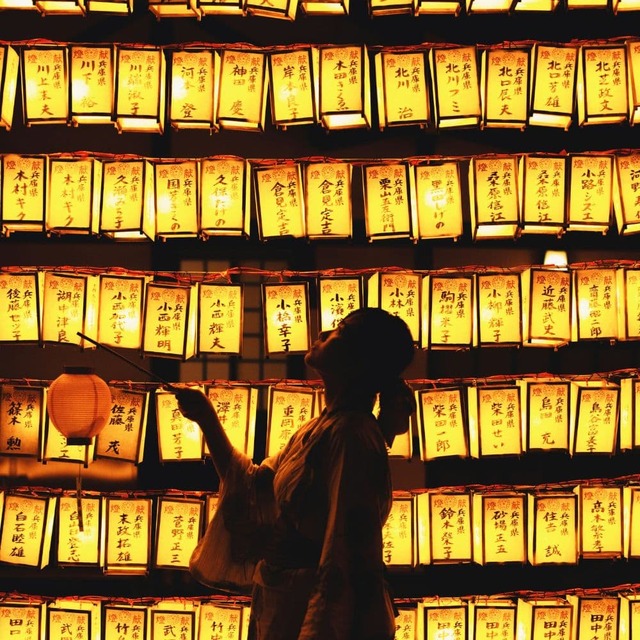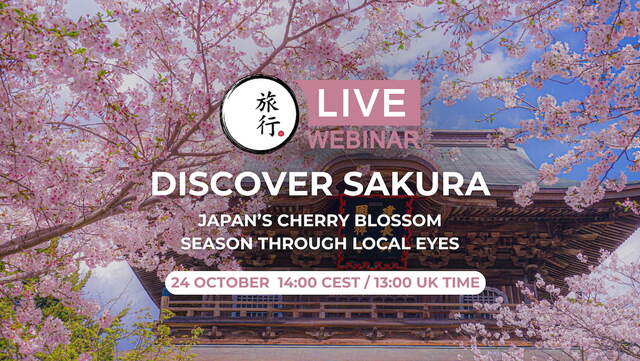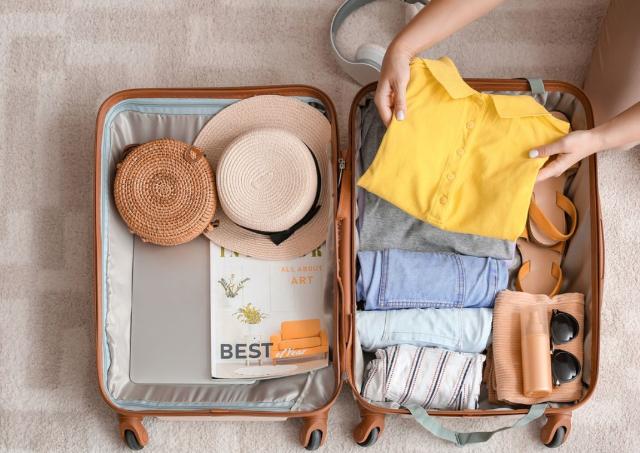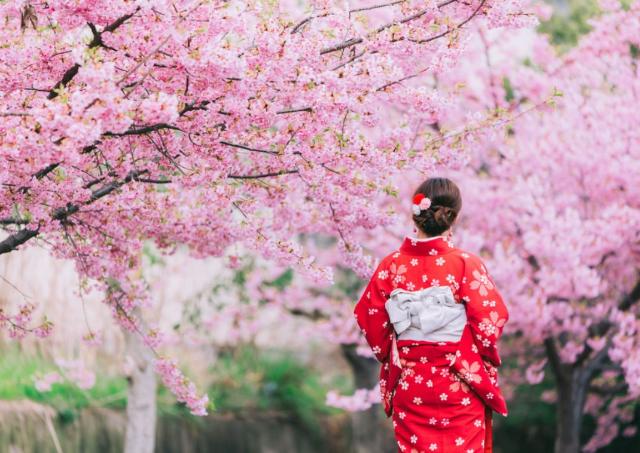Your Guide to Japanese Summer Festivals: What to See, Eat, and Experience
It would be too hard to pick our favourite part of the Japanese culture – we simply love it all. But when it comes to summer, there is something we wouldn’t miss for the world: festivals!
Called natsu matsuri, the typical Japanese summer festival has its season, usually taking place during July and August - the heart of summer months. Although, it can start earlier or finish a little later depending on the region and the tradition there. Every little city or even district has its own matsuri and you could attend one every week if you wanted to. Moreover, there is no identical natsu matsuri to be found: every one of them has its specificities and its rich history.
Pick Your Natsu Matsuri: Japanese Summer Festivals
What is a Matsuri?
Matsuri, which translates to “festival” in Japanese, is a vibrant and integral part of Japanese culture. These events are typically held to celebrate significant occasions, honor ancestors, or commemorate important historical events. Summer festivals, known as “Natsu Matsuri,” are particularly popular, offering a unique blend of traditional and modern elements. From the famous Tanabata Festival (the Star Festival), which celebrates the meeting of two star-crossed lovers, to the breathtaking Sumidagawa Festival (or Sumida River Fireworks Festival), Japan’s summer festivals are a must-experience for anyone interested in Japanese culture.
Our best advice would be to not even bother picking one and just join the first matsuri that will catch your eye – trust us, they’re all great. However, some matsuris are bigger, more famous, or located in incredible places that make them even more magical. Each summer festival offers unique experiences, such as traditional performances, food stalls, and lively atmospheres.
While each region adds its own twist, Japanese summer festivals usually include:
Colorful floats (dashi or yamaboko) - some of which are considered elaborate floats and recognized as intangible cultural heritage
Portable shrines (mikoshi) paraded through streets
Traditional dance performances like Bon Odori or Awa Odori
Local food stalls (yatai) offering delicious street snacks
Fireworks displays that light up the night sky
Most Popular Summer Festivals
Gion Matsuri Festival - Kyoto
Date: All of July
Let’s get away from the capital and head to downtown Kyoto, the heart of traditional Japan. Being one of the most famous traditional festivals and largest summer festivals in Japan, this one is quite coveted as well – but it lasts for a month! The Gion Matsuri is a famous festival that attracts visitors from all over, with its historical significance, grand parades, and vibrant street parties. Almost every day during July, a ceremony or event will take place in the Gion district. We recommend you check the yamaboko parade, on July 17 (Saki Matsuri Junko) and July 24 (Ato Matsuri Junko). Yamabokos are matsuri floats, and Gion’s ones are the star of the festival, they can weigh up to 12 tons with 50 men pulling them through the streets of Kyoto. The parade itself is worth the trip and is recognized by UNESCO as UNESCO Intangible Cultural Heritage.
Japanspecialist Tip: Book accommodation early. Opt for a hotel in the Karasuma or Shijo area for direct float access and festival vibes.
Obon Festival – National
Date: Mid- August
The Obon Festival is a time to honour ancestors and pay respects to the spirits of one's family. It is observed with a series of events held, typically occurring in mid-August, although the exact dates can vary depending on the region. This festival is deeply rooted in Japanese culture and spirituality, offering a unique glimpse into the country's rich traditions.
During the Obon Festival, families gather to clean and decorate the graves of their ancestors. It is believed that the spirits of the deceased return to the world of the living during this time. To welcome them, lanterns are lit and placed in front of homes, guiding the spirits back. Additionally, Awa Odori, a traditional dance, is performed in various regions, symbolizing the joy of reunion with departed loved ones.
The festival is also marked by vibrant celebrations, including delicious food offering traditional Japanese festival treats, such as yakisoba, takoyaki, and kakigori.
Japanspecialist Tip: Head to places like Kyoto’s Daimonji Festival or Fukushima’s Waraji Matsuri for a truly immersive Obon experience. And don’t miss the tōrō nagashi (floating lantern ceremony) if available—it’s one of Japan’s most moving summer traditions.
Sumidagawa Festival - Tokyo
Date: Last Saturday of July
Also known as the Sumidagawa Hanabi Taikai (Sumidagawa Fireworks Festival), this matsuri is the oldest fireworks festival in the world, held annually since 1732. It is located near Asakusa, on the banks of the Sumida River. It offers incredible views thanks to the Tokyo Skytree or the Asahi flame as a background for its main event. The festival starts on the last Saturday of July, making it a key date for summer festivities in Japan. Not to forget that Asakusa is one of the quite rare preserved traditional neighbourhoods of Tokyo, so you will enjoy a great atmosphere, nice surroundings, happenings, and a lot of traditional treats! This festival is so crowded that guests are guided along a predetermined path. Get ready to walk quite a bit and avoid amateur photographers on the way.
Japanspecialist Tip: Arrive early and head to the northern banks for better views and fewer crowds. Consider booking a seat on a yakatabune (traditional riverboat) for a one-of-a-kind outdoor adventure.
Mitama Festival – Tokyo
Dates: Mid-July
Among the most coveted festivals, you will find Mitama Matsuri – a lantern festival located at the Yasukuni Jinja Shrine in central Tokyo. In the precinct of the Yasukuni sanctuary, thousands of lanterns are lit up when the sun goes down, transforming it into a magical place. The festival also features traditional floats, dancing, and theatrical performances, enhancing the festive atmosphere. As it happens in central Tokyo, it is incredibly crowded though.
Japanspecialist Tip: Visit on a weekday to avoid weekend crowds. Arrive before sunset to capture the lanterns at golden hour.
Aomori Nebuta Festival - Aomori City
Dates: August 2–7
The Nebuta Festival features massive illuminated decorated floats representing gods, warriors, and mythical beasts. With dancers in haneto costumes and lively flute music, this is one of the most famous events in Tōhoku.
Japanspecialist Tip: Try dancing with the haneto! Tourists are welcome—just rent a costume locally.
Tanabata Festival: The Star Festival – Sendai
Dates: August 6–8
Based on the romantic Tanabata legend, this Star Festival features vibrant streamers hanging across shopping arcades and streets. It’s one of Japan’s largest Tanabata celebrations and deeply embedded with cultural significance.
Japanspecialist Tip: Don’t miss the fireworks on August 5, the night before the festival officially begins.
Other Matsuri Worth Visiting:
Fukagawa Festival
(Tokyo, mid-August): One of the “Edo Three Great Festivals,” known for its wild water-splashing procession.
Yosakoi Soran Festival
(Sapporo, June): An energetic blend of traditional dance and pop music, showcasing modern festivals with cultural roots.
Tenjin Matsuri
(Osaka, July): Known for its grand river procession and dazzling fireworks.
Sanno Matsuri and Kanda Matsuri (Tokyo)
Historical local festivals held annually, alternating every other year.
Dress up properly for Japan's Summer Festivals
Even though the tradition tends to disappear, it’s pretty common to attend a traditional Japanese festival dressed in yukata, a lighter form of kimono worn during the hot summer months. You can purchase a cheap yukata set for around 2,500¥ in any mall or tourist neighbourhood – but you could also splurge and go up to 20,000¥ (and more) to get a more modern or original set.
If dressing up in yukata can look daunting, it will only take a few videos and sessions of training to master the art of tying your belt (or at least pretend to know what you’re doing). We have to admit that the cheap sets come with a pre-tied belt, which is kind of amazing – and an option that most locals choose.
Japanspecialist Tip: Look for yukata rental shops that offer dressing services, especially in Kyoto and Asakusa. You’ll blend right in and feel the festive spirit of a summer festival in Japan is famous for.
Calling all the foodies: Explore the Food Stalls
We never shut up about how amazing Japanese gastronomy can be, and the culinary delights of street food have nothing to be shy about – it might even be considered better for some. During any matsuri, you will pass by yatai stalls: local street food stalls that sell delicacies to ravish your tastebuds and help you freshen up in the humid heat.
From most familiar dishes (potato fries of course!) to the most exotic ones (an entire grilled octopus for instance), you will certainly find something for your palate and your eyes. Festival food tends to be as much good-looking as it’s good, don’t hesitate to try one of the decorated bananas, the refreshing iced cucumbers, or even the steaming takoyaki (ball-shaped octopus snacks). From traditional to modern takes, there is something there to empty your wallet and fill your stomach!
Japanspecialist Tip: Bring cash and a small towel. Matsuri food is messy, delightful, and worth every yen - especially when visiting Japan during peak season.
Don’t forget the finale: Fireworks Festival
A good matsuri is nothing without outrageous fireworks that light up the night sky, and the Japanese don’t joke about it: they’re colourful, impressive, so precise it’s breathtaking, and last for long minutes. Don’t expect a “little show” when a final firework is announced at your local matsuri, even the smallest festival committee will put much effort into it, and it will be worth staying late.
One note though, visitors tend to leave all at once when fireworks are over, so you better be prepared to walk slowly in the middle of a crowd. If you’re not comfortable with that idea, we would recommend either leaving before the end or staying a little later to avoid this.
FAQ Summer Festival Japan
When is the summer festival season in Japan?
The typical summer festival season in Japan runs from late June through mid-August, with peak events happening in July and August. However, some festivals in cooler regions or coastal areas may take place slightly earlier or extend into early September. Plan your visit accordingly to catch the biggest festivals like Gion Matsuri, Obon, or Sumidagawa Fireworks.
What should I wear to a Japanese festival?
Wearing a yukata, a casual summer kimono, is a popular and festive choice—especially in traditional towns like Kyoto or Asakusa. Yukata sets are available for purchase in tourist districts or can be rented with dressing services. Otherwise, light and breathable summer clothes are fine, but respectful attire (no beachwear) is appreciated. Comfortable shoes are a must for walking!
Are Japanese summer festivals free to attend?
Yes—most Japanese summer festivals are free to attend! You can walk through the festival grounds, enjoy the floats and fireworks, and watch performances without paying an entrance fee. However, you'll want to bring cash for food stalls, games, souvenirs, and possibly seating or yukata rentals. Some premium seating (e.g. for fireworks) may require advance reservation and a fee.
Essential Packing List for Natsu Matsuri Goers
Whether you're heading to a major city festival or a local matsuri in the countryside, here's what to pack for the best experience:
Lightweight hat or fan – For sun protection in the daytime
Comfortable shoes – You'll walk and stand a lot
Small towel – Useful for the summer heat or eating street food
Cash (yen) – Most yatai stalls are cash-only
Portable phone charger – Great for photos and directions
Yukata or light summer clothes – Embrace the festive spirit
Reusable water bottle – Stay hydrated, especially in July/August
Pocket tissues – Not all festival bathrooms have them
Optional but helpful: a folding stool or picnic mat if you plan to camp out for fireworks.
Did we create a little need to explore a Japanese matsuri in you? We do hope so! As we said, there are many to choose from, all with their specificities, so don’t hesitate to ask us and get a tailored recommendation for your perfect natsu matsuri! If instead you want to go for a totally different vibe under the snow look out to the Sapporo snow festival or other magical places in the snow.
Plan your trip with us
Get in touch with one of our travel consultants, they are ready to help you create the trip you always dreamed of.
Online Consultation



